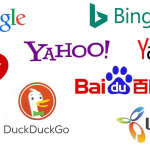All information presented here is presented in good faith and does not constitute diet, lifestyle or health advice.
Articles have been sourced from many places and attributed accordingly. It is the intention of [sc name=”websitename”] to inform viewers sufficiently for them to make an educated purchase of the products promoted on the site.
Photographs are sourced from ‘Royalty free’ or ‘Open Commons’ sources in good faith. If you hold copyright to these, please advise and we will immediately remove them.
Articles containing photographs have had the photographs removed to avoid any possible breach of copyright.
17 U.S.C. § 107
Notwithstanding the provisions of sections 17 U.S.C. § 106 and 17 U.S.C. § 106A, the fair use of a copyrighted work, including such use by reproduction in copies or phonorecords or by any other means specified by that section, for purposes such as criticism, comment, news reporting, teaching (including multiple copies for classroom use), scholarship, or research, is not an infringement of copyright. In determining whether the use made of a work in any particular case is a fair use the factors to be considered shall include:
- the purpose and character of the use, including whether such use is of a commercial nature or is for nonprofit educational purposes;
- the nature of the copyrighted work;
- the amount and substantiality of the portion used in relation to the copyrighted work as a whole; and
- the effect of the use upon the potential market for or value of the copyrighted work.
The fact that a work is unpublished shall not itself bar a finding of fair use if such finding is made upon consideration of all the above factors.[4]
Copyright Clearance Center Vice President, General Counsel and Secretary Frederic Haber, who told us, “In the Copyright Act of 1976, Congress finally enshrined fair use in statute, but did not define it because what is fair use and what is not vary so widely with circumstances.
Instead, Congress adopted and refined a test that judges had been developing over the years, directing a court to look at all the circumstances surrounding a use and make a judgment as to the appropriate way that a copyright holder’s rights and a user’s fair use privilege can best be balanced. That’s the famous ‘four factor’ test of Section 107 of the Copyright Act.”
“A fair use, then, is defined for digital content exactly as it’s defined for all other content,” he added. “It’s a use that benefits society generally but does not unreasonably interfere with a copyright holder’s right to exploit and protect its creative output (a right which is itself intended to encourage the creation of more creative output for the ultimate benefit of society).
The four factor test is technology-neutral, much as copyright itself is technology-neutral, because it is intended to address the needs and rights of people (and not technologies) in as balanced a fashion as possible.”
Jurisdiction and Other Points to Consider. If you use our site from locations outside of the United States, you are responsible for compliance with any applicable local laws.
[sc name=”websitename”] may modify these various Terms of Use, Disclaimers, Copyright and DMCA pages and the agreements they create, at any time, simply by updating this posting and without notice to you.













